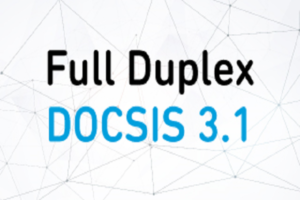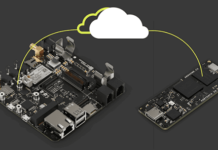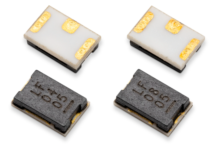
5G is the buzz word of the year for mobile devices and cellular infrastructure — but cable TV infrastructure is doing its part to upgrade its system capacity and support the transition to 5G.
One breakthrough CATV technology currently in development is Full Duplex DOCSIS 3.1, which will significantly increase the upstream capabilities of existing hybrid fiber-coaxial (HFC) cable networks. What is Full Duplex DOCSIS? How is it different from DOCSIS 3.1 technology deployed today? What are the challenges of this new standard? Let’s explore.
The state of DOCSIS 3.1 today
DOCSIS (or Data Over Cable Service Interface Specification) originated in the late 1990s when the cable industry moved from an analog to a digital transmission system. DOCSIS 1.0 allowed a digital signal to transmit over existing analog coaxial cable systems, and subsequent releases of the DOCSIS specification have brought increased data speeds and capabilities to the system, as shown in the following table.
The move to Full Duplex DOCSIS 3.1
Even with the latest DOCSIS 3.1, the upstream capacity of the cable industry’s HFC network likely isn’t sufficient in the long run. The goal is to achieve 10 Gbps symmetrical streaming — or 10 Gbps bidirectionally, downstream and upstream — for several reasons:
Competing technologies, such as fiber, can already hit 10 Gbps symmetrically. CATV operators need to achieve 10 Gbps upstream to remain competitive with Google Fiber, fiber to the home (FTTH) and passive optical networks (PONs), which can already transmit 10 Gbps upstream
- Emerging applications will demand faster upstream and downstream speeds. Current upstream capacity is probably sufficient for the use cases existing today, such as streaming videos or Facebook Live. But cable networks will need to significantly increase their upstream capacity to support new user experiences and those of the future, such as virtual reality, autonomous cars, sensor networks, connected smart homes and others. These new use cases will exponentially increase the amount of data being transmitted upstream and downstream.
- Cable and fiber networks need to support the growing bandwidth and data requirements of 5G. As cellular networks upgrade to 5G over the coming years, cable and fiber networks will also need to increase their capacity to help the overall infrastructure support 5G.
The most challenging problem is that it’s expensive to tear up existing coaxial cable or upgrade the head end. Instead, cable MSOs want to make their existing copper coaxial networks last longer and are looking for alternative ways to increase the bandwidth of cable networks. Full Duplex (FDX) DOCSIS is their answer.
Full Duplex DOCSIS is an extension of the DOCSIS 3.1 specification that significantly increases upstream capacity and allows cable MSOs to achieve 10 Gbps speeds downstream and upstream.
Cisco and Intel had proof-of-concept demos at ANGA COM and SCTE in the spring and fall of 2017 to show that FDX is possible, and CableLabs released the final Full Duplex DOCSIS 3.1 specification in October 2017. Since then, suppliers are feverishly working to develop nodes and modems to support FDX, with the first FDX nodes due to Comcast this summer for initial trials. We should start seeing field trials from some MSOs in late 2018 or early 2019, and the first North American commercial deployments of FDX in 2019.
FDD today, FDX tomorrow
The cable system transmits every frequency in a solid band, from 50 MHz to 1.2 GHz. Since the 1970s, the CATV network has used frequency division duplexing (FDD), where the spectrum is split between upstream and downstream data transmission. In FDD, upstream and downstream signals don’t interfere since they don’t overlap, as shown in the following figure.
To achieve full 10 Gbps symmetrical streaming, the cable system must change from FDD to full duplex. In FDX DOCSIS, MSOs can use the full spectrum for upstream and downstream transmissions, in both directions at the same time, with overlapping transmissions at some frequencies.
Addressing the RF challenges of DOCSIS FDX (Read on next page)



















